In block after block of city neighborhoods in Erie, there's not a bank to be found
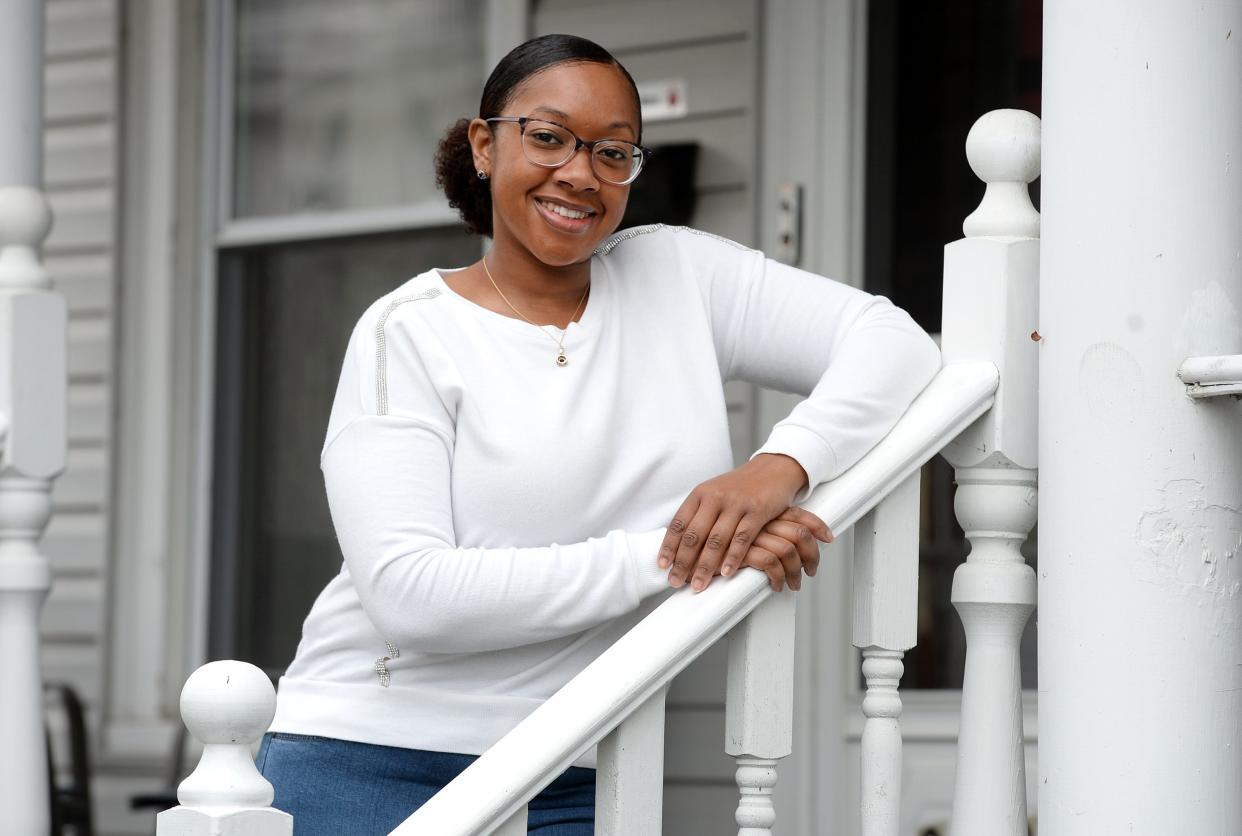
For a time, Chatiqua Keyes-Carr, a 31-year-old mother of two, was not eager to visit her bank.
It was a reminder that her account was several hundred dollars in the red.
"I got caught in a scam, money got drawn out of my account, and I owed money,” she said. “But instead of taking care of it, I avoided that account for a long time.”
A child care instructor who spent seven years in public housing, Keyes-Carr said she's turned her finances around thanks to programs in financial literacy provided by the Erie Housing Authority and the Eagle’s Nest Leadership Corp.
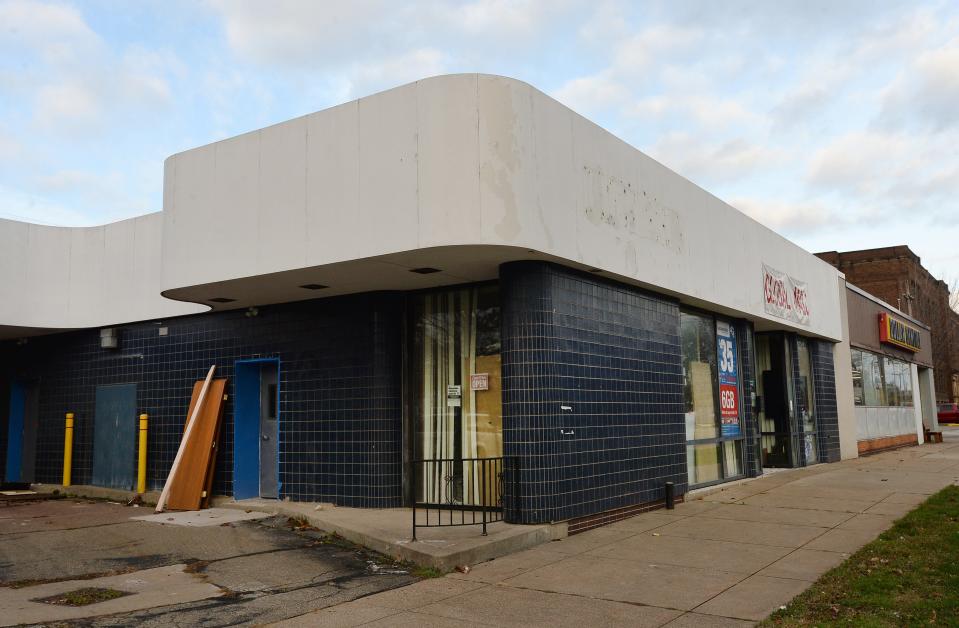
Those programs helped Keyes-Carr to save about $6,500 to purchase her first home, a four-bedroom house in the 2500 block of Wayne Street.
Keyes-Carr said the experience reinforced the importance of personal financial responsibility.
And Keyes-Carr also believes it is important for financial institutions to have a strong and easily accessible presence in all neighborhoods, especially low-income and minority communities, to give residents a bridge to the kind of assistance and knowledge that she used to remake her life.
In Erie, some view that kind of access as being in short supply.
"There are hardly any banks in any areas of the minority community. That's a huge problem," said Angela Euell-McNair, who serves on the Erie School Board and owns Jumpstart Early Learning Center at the Booker T. Washington Center.
The Rev. Jerry Priscaro of St. Ann Catholic Church on East Avenue remembers when banks could still be found in his eastside neighborhood.
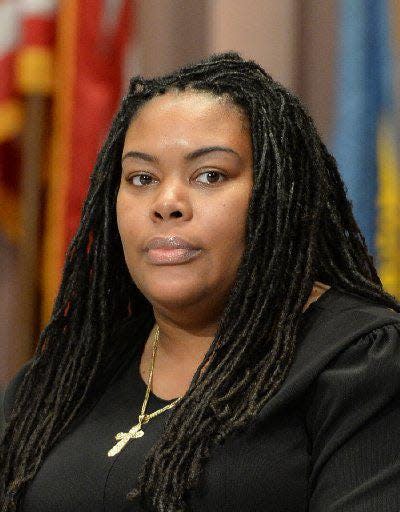
He said it meant small business owners had just a short trip to drop off their daily deposits.
It meant there was a good chance the person behind the counter might recognize you if you went in to talk about a mortgage.
The presence of the bank building and its employees was a message, it seems to him, that the bank believed in the neighborhood.
"We used to have a bank on East Avenue," said Priscaro, who is the coordinator of the East Avenue/Hess Avenue Neighborhood Watch. "Now, I personally don't know if there is a bank on the east side from the bayfront to East 38th."

For Euell-McNair, that's a minor but frequent inconvenience. Several times a week, she drives deposits from her business in the 1700 block of Holland Street to her bank at Seventh and State streets.
"That's a pretty good little drive," she said.
For others — someone who doesn't drive or isn't savvy with mobile banking — that distance serves as a barrier, she said.
"It makes it hard. I see a lot of people spending money to go to check-cashing services. I see them lined up on payday," Euell-McNair said. "They just have nowhere else to go."
Shrinking numbers
The changes Priscaro has seen in his neighborhood aren't unique to Erie.
Banks across the country continue to close more branches than they open.
It's true in Pennsylvania. It's true in Ohio. It's true in Michigan. And it's especially true in the country's urban areas.
A study by the National Community Reinvestment Coalition, known as NCRC, found that the United States lost about 6,000 of its 95,000 bank branches between 2016 and 2018.
Of those branches that closed, 82% were in urban ZIP codes.
In Erie, the most recent round of cuts came in September, when Pittsburgh-based PNC Financial Services Group announced plans to close 280 branches by the end of 2021, including a drive-through location in the Liberty Plaza and a branch in Linesville.
At about that same time, Warren-based Northwest Bank announced plans to close 42, or about 20%, of its 205 full-services offices, including the Grandview Plaza location and a branch in Lake City.
More: Bank branches closing in Erie, Crawford counties
Even after those most recent cuts, and earlier rounds of shuttered branches, bank offices remain plentiful in downtown Erie and in most suburban areas of Millcreek, Harborcreek and Summit townships. Bank offices can also be found in the county's smaller population centers including Corry, Waterford, Union City and Wesleyville.
In fact, nine different banks operate 44 branches in the city of Erie and surrounding suburbs. Another 13 credit unions also operate in the city, some of them from multiple locations, according to creditunionsonline.com.
But you won't find them on East Avenue, Parade or East 26th streets or in most of Erie's inner-city neighborhoods.
Outside of the Peach Street and State Street corridor, bank and credit union branches are in short supply in large swaths of the city, particularly on the city's east side and north of East 38th St.
Consider this: An examination of 12 census tracts on Erie's east side — all east of State Street, west of Bird Drive and Franklin Avenue, and north of East 33rd Street — shows the area is home to 31,125 people, according to censusreporter.org.
What that area is not home to is a banking institution.
Understanding the change
Competing forces are at work, said Greg Filbeck, director of the Black School of Business at Penn State Behrend.

On one hand, the Community Reinvestment Act, enacted in 1977 and designed to encourage banks to meet the needs of all segments of their communities, including low-income areas, "kind of forced banks to be good citizens," Filbeck said.
But the reality of bank branches in city neighborhoods also has been shaped by the financial crisis of 2007-2008.
"There is an increased push for ensuring capital adequacy of banks," Filbeck said. "There is more of a focus on ensuring capital adequacy of banks and maintaining their portfolio."
Maintaining a local branch can cost more than $1 million a year, he said.
Pete Sitter, spokesman for Erie-based Marquette Savings Bank, said the bank hasn't lost sight of its obligations.
"All our branch locations fulfill the mandates of the Community Reinvestment Act that require all banks to meet the needs of the communities they serve," he said in an emailed response to a question.
"In fact, our Peach Street office — which is located in one of the poorest ZIP codes in Pennsylvania — serves lower income neighborhoods in the lower east and west sides," he said.
Study: Erie’s 16501 is state’s poorest ZIP code
"It is also important to know that Marquette has significant commitments of support for organizations that directly impact inner-city residents such as: Our West Bayfront, The Sisters of Saint Joseph east and west side Neighborhood Networks and the Saint Martin Center, where we have sponsored financial education programs in addition to neighborhood revitalization efforts," Sitter said.
Cost-cutting move
Local financial institutions acknowledge that branch locations have been declining for decades.
The reason is simple: "Lower profit margins," said Thomas Brennan, spokesman for Erie Federal Credit Union.
"Financial institutions were looking to reduce costs by closing inefficient branch office locations. Also, there were a number of mergers after the financial crisis that forced branch consolidation and reduction," he said in an emailed response to a question.
He continued, "U.S. banks continue to close brick and mortar branches in record numbers as customers are significantly increasing their use of mobile/online banking and noting a decline in foot traffic. The closures are/were driven by a combination of 'digital adoption' and demographics. Younger people are less likely to visit branches."
Does location matter?
But with the growth of mobile and online banking, it's fair to ask how much location really matters. After all, millions of Americans are customers of online banks they never visit.
More: How to bank during a pandemic
Davona Pacley, one of the co-founders of Erie's Black Wall Street, understands the argument. She has had bank accounts for much of her life but doesn't often visit a bank in person.
Still, Pacley views convenient access to banks as a community priority.
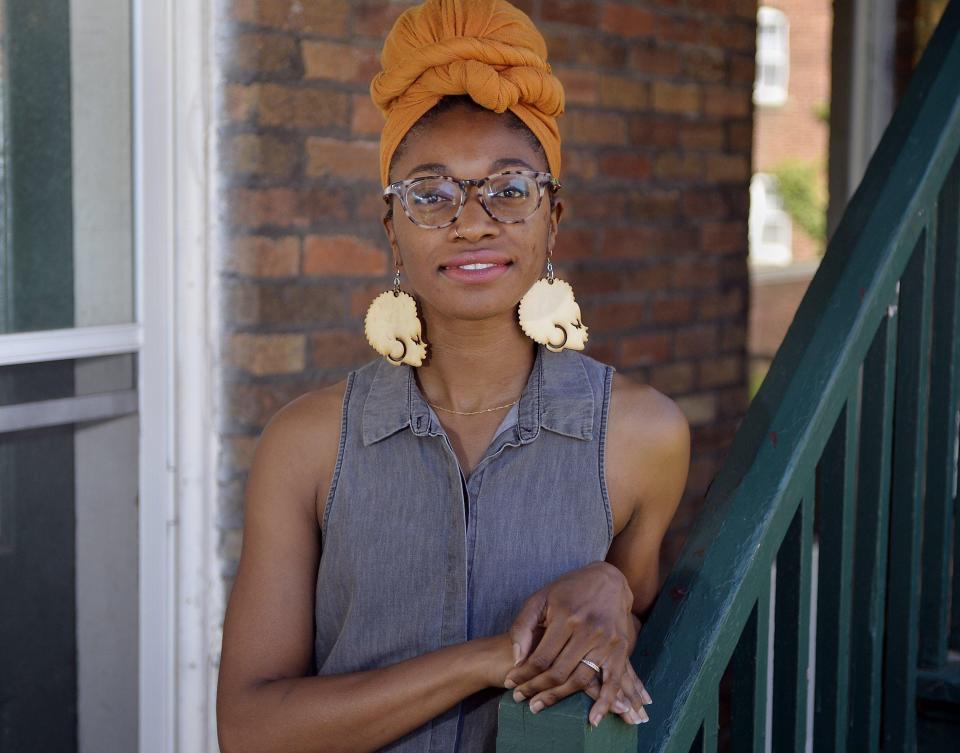
In some cases, the presence of a bank office is symbolic, an expression of confidence, "that there is going to be other things flourish in that community," Pacley said.
"Banks do need to have centralized space to show there is growth there and that there can be possibilities and homeownership," Pacley said. "If you don't want a bank in the community, you don't want to see the community grow."
"Many people don't feel comfortable with some banks and the banks don't feel comfortable with them, either," Priscaro said. "It helps if a bank has a vested interest in a neighborhood."
The three financial institutions that responded to questions from the Erie Times-News, Erie Federal Credit Union, PNC and Marquette Savings Bank, each stressed in different ways that their existing locations, especially those in downtown Erie, are geared to meeting the needs of the inner-city population.
In detailed responses, all three struck common themes, writing about their roles in financial literacy and proximity to inner-city residents.
Brennan, of the Erie Federal Credit Union, said, "We continue to serve a significant number of members who reside in underserved, inner-city neighborhoods. For example, we have over 3,400 members who reside in the 16501, 16503 ZIP codes. We know that for us to make an impact in a particular community or part of the community, we need to be there."
Bank officials say that maintaining an office isn't the only way to demonstrate commitment.
The decision about where to locate a bank branch "would likely not be a direct link to additional investment in poorer neighborhoods," Sitter said. "In general, banks locate where other businesses — such as grocery stores, pharmacies, schools, department stores and post offices — are located and people can make all their stops in one area."
Jim Stevenson, regional president for PNC, said his bank contributes to the community in numerous ways.
"Our investments in Erie County include our comprehensive collaboration with several organizations, like St. Martin Center and Second Harvest Food Bank of Northwest Pa.," Stevenson said.
Especially important, he said, "has been our collaboration with Eagle’s Nest Leadership Corp. to promote job skills training and financial education."
Why banks matter
Filbeck, who has been working on an initiative to bring financial literacy to high school students, said a lack of a banking relationship tends to force people toward predatory lenders and check-cashing services.
"It's a supply-demand relationship," Filbeck said. "If you don't have a supply (of banks) who can charge reasonable fees for basic banking services, it's a captive market. When you don't have these types of organizations, people tend to live with current consumption. There is nothing in their environment to encourage that process of saving."
Euell-McNair knows something about that world.
She grew up in a household where her mother would go to a bank, but her father would pay a fee each time he needed to cash a check.
"My mom was more educated in that area," she said. "I think a lot of people are misinformed. I am able to see both sides of that."
Some argue that having a bank on the next block isn't essential.
But after securing a $22,000 Paycheck Protection Program loan with the help of her bank, Euell-McNair believes having a relationship with a bank, wherever it might be located, is important.
"At that time I was going into that bank almost every other day. If I wasn't going into that bank and I didn't have those relationships, I wouldn't have gotten that loan either."
According to a report by the Hope Policy Institute, which works to help shape financial policy, people who don't use banks pay a price.
"Approximately 34 million households in the United States live at least partially outside the financial mainstream," according to the institute. "As a result, households that live outside the financial mainstream spend nearly 10 percent of their annual income on interest and fees from non-bank services."
Pacley said she understands that proximity isn't the only thing that keeps people away from banks or credit unions. She has friends her own age and younger who don't have bank accounts.
"A lot of people in our community don't trust banks," she said. "I have met a lot of older people who do not keep their money in banks. They keep it in a can on top of the fridge. There is still that mistrust."
In some cases, experience with expensive overdraft fees is to blame, she said.
More: Getting started in online banking
Not a bank desert
While the nearest bank is often a short car trip or bus ride away for many in the city of Erie, few residents could be described as living in a bank desert.
Although a food desert is often defined as an urban area where it is difficult to buy affordable fresh food, a 2019 study by the Federal Reserve Bank describes bank deserts as a place with no bank branch within 10 miles.
Opinions vary on what it means to live in a community with limited access to banks.
A 2019 report on banking deserts by the Bank Policy Institute argues that concerns about the inclusiveness of the U.S. banking system have been overstated.
The BPI study concluded, "the vast majority of the U.S. population has access to a bank with only 6 percent of Americans living in banking deserts, and (2) those living in low-income or minority areas are more likely to have better access to bank branches than those living in middle- or upper-income areas."
The Federal Reserve paints a bleaker picture, saying that people who don't have access to a financial institution are 20% more likely to have no credit score, a hurdle for anyone trying to obtain a loan.
According to the Federal Reserve, "The negative effects are similar to having a $6,000 reduction in annual income."
Keyes-Carr, whose path to homeownershipwas highlighted on social media by the federal Department of Housing and Urban Development, remembers thinking about the distance to bank branches when she lived in public housing.
"When you actually have banks in your community, it’s easier for you to go there and ask questions. You can find out much easier about what programs are out there to help you,” she said.
'Chipping away at hope'
Gary Horton, president of the NAACP’s Erie branch, said the lack of bank branches in some sections of Erie’s inner city “speaks to the broader issue of disinvestment.
“It’s a continuation of chipping away at inner-city people’s hope,” Horton said. “We’ve seen it with schools closing. With supermarkets going away. And now you see it in some parts of the city with banks."
However, Horton said, mechanisms exist that can forge solutions.
Community Benefit Agreements are one possible remedy, Horton said. Such agreements are legally binding documents that usually stipulate that multimillion-dollar economic development projects must have a tangible, positive impact on residents and affected neighborhoods.
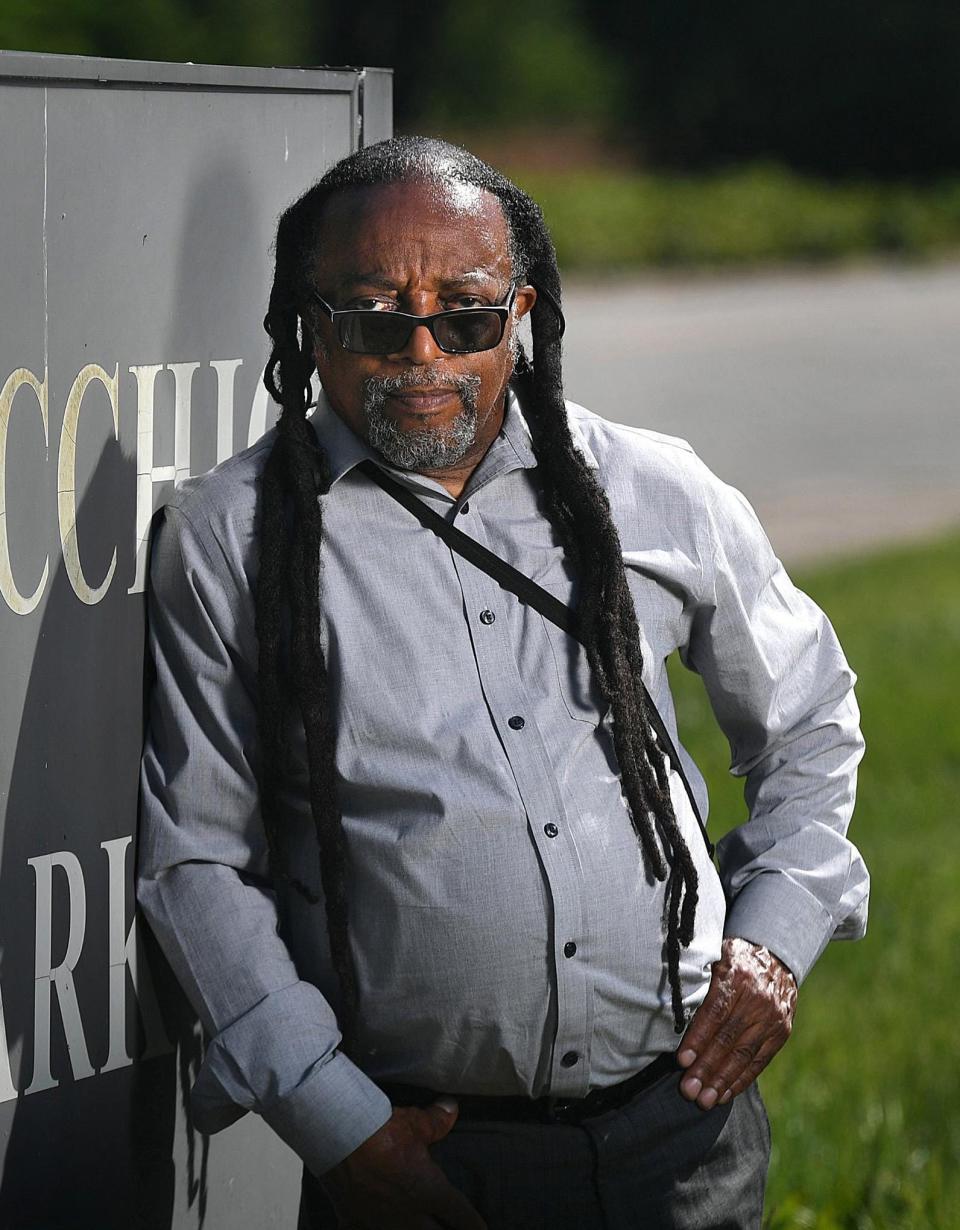
Creating bank branches or in-person banking options in underserved areas could be accomplished as part of a CBA tied to a large-scale community improvement project, he said.
Horton said banking options for underserved residents/businesses could also be forged as part of a project in any of Erie's eight federal Opportunity Zones, all of which are in designated low-income census tracts.
“I think the banks have the incentives, now they have to have the commitment and the creativity to come into these areas,” Horton said. “You need creativity and non-status quo thinking. The tools and the resources are there to do that.”
But there is little to suggest a change in direction. In fact, trends suggest more cuts will come.
"While the need for a branch office will always be there, the traditional branch office is evolving," Sitter said. "The popularity and prevalence of smartphones and access to the internet has enhanced the use of online and mobile banking."
The coronavirus has only accelerated the process, forcing thousands of local customers to make do with something other than a face-to-face meeting at the bank.
But Pacley said she hasn't given up on banks and she hasn't given up on the idea of seeing more bank offices in the neighborhoods where people live.
Banks should be more than places that hold on to your money and cash your checks, she said.
"I think if banks focused more on getting into their own homes and focused more on homeownership I think there would be a wave," she said.
Bishop Dwane Brock, of Victory Christian Center and Eagle’s Nest Leadership Corp., is one of the people who helped Keyes-Carr expand her financial knowledge.
Brock, who has worked with several local banks, including PNC, on financial literacy programs for high school students and young adults, recognizes the role financial institutions are playing in financial literacy.
More: How schools can teach kids to be smart consumers
But he also sees the value of what's been lost.
"Minorities need to be able to walk into a bank and see people who look like them — tellers, loan officers, bank managers,” Brock said. “That is very important.”
But there is more to it than that.
“If you’re not using a bank, if you don’t have a bank close to you that you can access and maintain an account at, then you don’t exist economically in a sense,” he said.
This subscriber-only article has been made available to all viewers. Thank you for your support of local journalism in northwestern Pennsylvania.
Contact Jim Martin at jmartin@timesnews.com.
Contact Kevin Flowers at kflowers@timesnews.com. Follow him on Twitter at @ETNflowers.
This article originally appeared on Erie Times-News: Area of inner-city Erie barren of banks, economic benefits they bring

